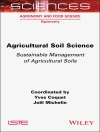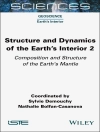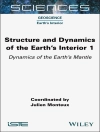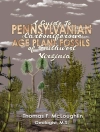This book is written for all those involved in measurement of soil water phenomena, whether they be environmental scientists, field technicians, agronomists, meteorologists, hydrogeologists, foresters, physical geographers, civil or water engineers or students in these subjects. It contains a comprehensive description of all the major methods used for measurement of soil water content and potential, solute concentration, transport and balance of water and solutes, including recharge to groundwater aquifers. The emphasis is firmly on techniques which can be applied in the field or on samples obtained from the field.
The theory and practice of the workings of the main instruments and methods available is described, along with practical tips on surmounting some of the main difficulties and explanations of many commonly encountered jargon words.
表中的内容
Preface vi
Part I: Introduction 1
1 Soil Water in Context 3
2 How Does Water in Soil Interact with the Soil Matrix, Air, Roots, Gravity and Other Substances Present? 6
3 What Do We Need to Measure? 14
4 Spatial Variability 16
Part II: Water Content 21
5 Definitions 23
6 Gravimetric Method 26
7 Neutron Scattering 43
8 Dielectric METHODS 101
9 Dual-Probe Heat-Pulse Sensors 150
10 Electrical Resistivity Imaging 152
Part III: Water Potential 159
11 Water Potential Measurement 161
12 Tensiometers 164
13 Indirect Methods of Water Potential Measurement 203
14 Beyond .10 Metres Water Head 214
Part IV: Water Content – Potential Relations 223
15 Soil Water Characteristic Measurement 225
Part V: Hydraulic Conductivity 237
16 Hydraulic Conductivity Measurement and Prediction 239
17 Hydraulic Conductivity Measurement of Confined Soil Samples 241
18 Unconfined Measurements in the Field 257
Part VI: Solute Measurement 277
19 Principles and Pitfalls 279
20 Solution Sampling 283
21 Solute Concentra tion Estimation by Electrical Conductivity 292
Part VII: Water and Solute Movement 301
22 Water and Solute Transport Applications 303
23 Water and Solute Flux Measurement 306
24 Soil Water and Solute Balance Measurement and Estimation 312
Part VIII: Conclusion 333
25 Concluding Remarks 335
References 336
Index 353
关于作者
Author affiliation:
DAVID COOPER graduated in Physics from Imperial College, London. He spent 23 years as a soil physicist with the UK Institute of Hydrology, later the Centre for Ecology & Hydrology (CEH), followed by 12 years as Head of the Hydrological Instruments Group at CEH. His work has focussed mainly on field measurement of soil water and solute fluxes and of soil hydraulic properties in a wide variety of lithologies and areas of the world, including at several sites in southern England, northern France, Kenya, Niger, Mauritius, India and China. He has contributed to advances in measurement of soil water content by neutron, capacitance and time domain reflectometry techniques, hydraulic properties measurement methods in situ in the field and soil water potential measurement using mercury manometer and pressure transducer tensiometers over extended periods at both shallow and deep depths, down to at least 60 m. He has six children and, at the time of writing, nine grandchildren.












